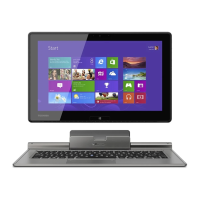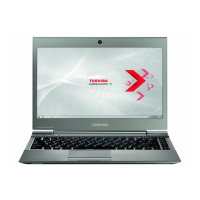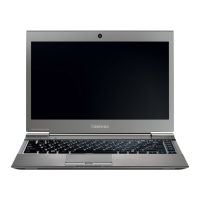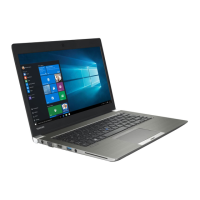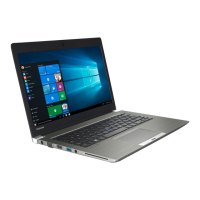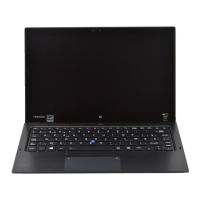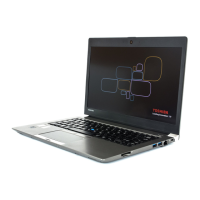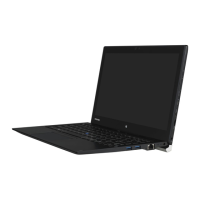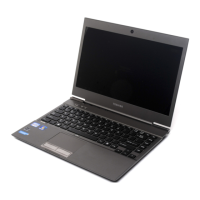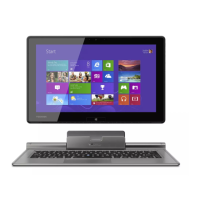
Do you have a question about the Toshiba Portege Z10T-A and is the answer not in the manual?
Information regarding copyright, disclaimer, and trademarks for TOSHIBA computers.
Provides general regulatory information applicable to TOSHIBA computers.
Details FCC compliance notices and information for digital devices and radio frequency emissions.
States the product's compliance with EU directives and CE-Marking requirements.
Lists all hardware and documentation items included with the computer for setup.
Explains the dual operating modes (tablet and laptop) supported by the computer.
Provides basic information for initial setup, including connecting hardware and turning on the power.
Explains procedures for shutting down, restarting, and using Sleep or Hibernation modes.
Identifies and illustrates the important components of the computer in tablet mode.
Details the components of the TOSHIBA Keyboard Dock, including front and back views.
Describes internal hardware components such as battery pack, CPU, and Solid State Drive.
Explains power conditions, battery indicator status, and power indicator status.
Provides instructions and precautions for operating the computer in tablet mode.
Details basic touch screen gestures like tap, press and hold, pinch, and rotate.
Describes touch pad gestures such as tap, two-finger tap, pinch, and scroll.
Details keyboard layouts, function keys, special keys, and keypad overlay functions.
Explains battery types, use, recharging methods, and care for battery packs.
Describes pre-installed utilities and how to start them, accessed via TOSHIBA Desktop Assist.
Explains how to set, change, or delete user and supervisor passwords for computer access.
Details the configuration management tool for BIOS settings, CPU, display, and boot options.
Explains creating recovery media and restoring the system from recovery partitions or media.
Guidelines for identifying and resolving problems, including observation and documentation.
Basic troubleshooting steps focusing on simple solutions like checking connections and peripherals.
Steps to analyze problems by checking hardware, software, and system messages.
Troubleshooting power-related issues, including overheating and AC adaptor problems.
Addresses battery issues like not powering the computer or not charging correctly.
Summarizes the computer's technical specifications, including physical dimensions and environmental requirements.
Details AC power cord specifications, current rating, and certification agencies.
Covers wireless technology interoperability, radio frequency, and Bluetooth specifications.
Provides legal footnotes regarding CPU performance, 64-bit computing, memory, battery life, and LCD.
